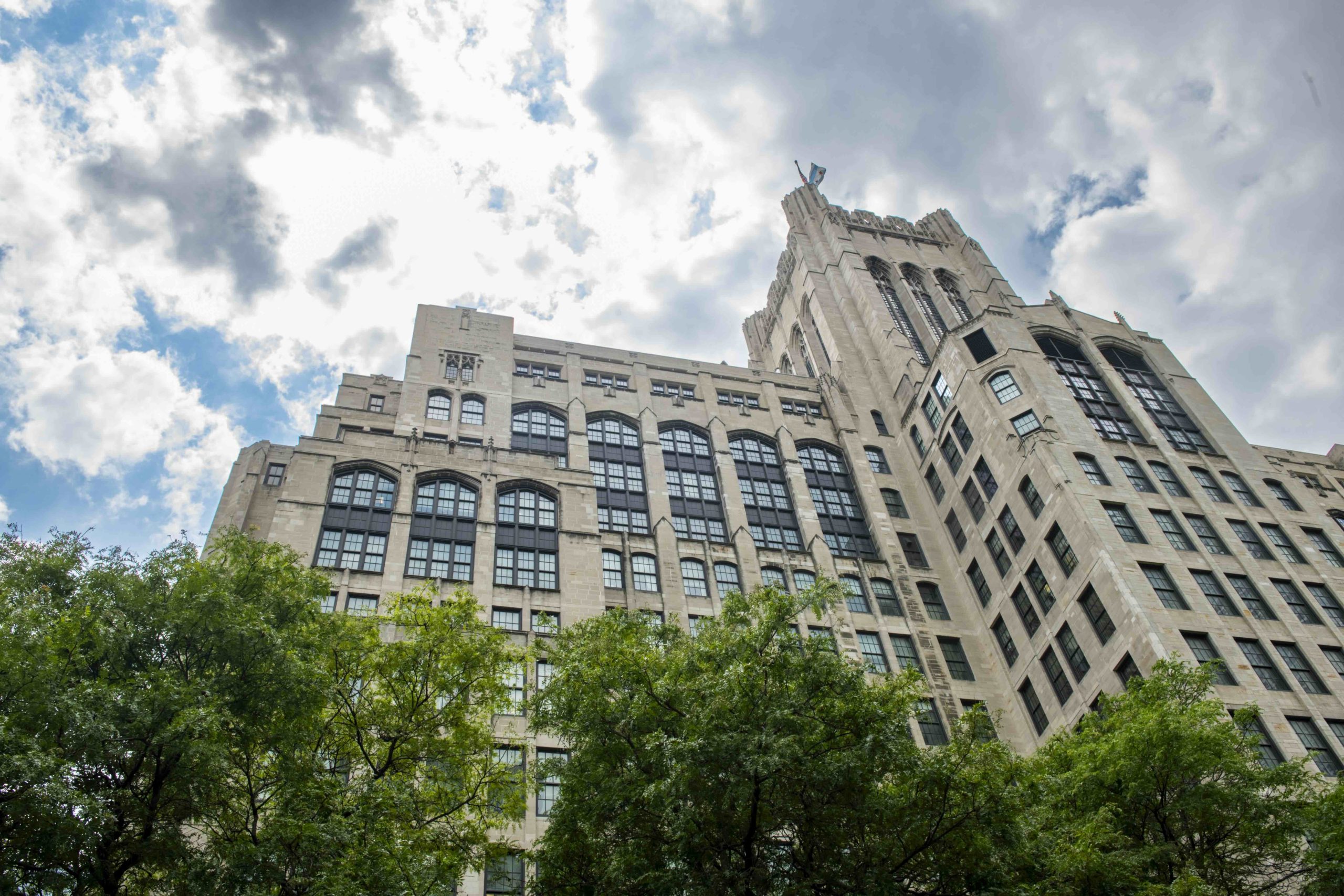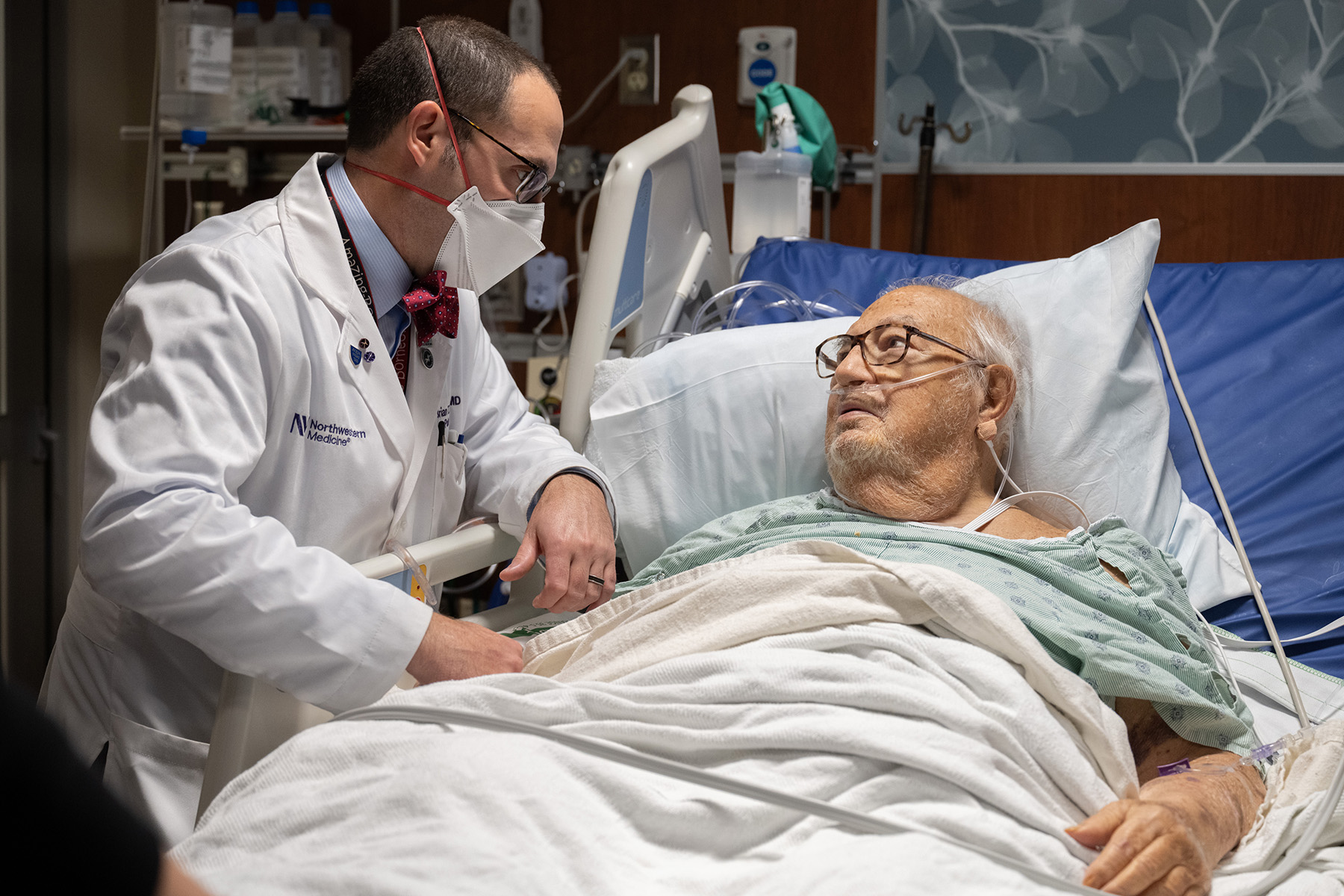In the two years since Northwestern University broke ground, the Louis A. Simpson and Kimberly K. Querrey Biomedical Research Center has progressed from an extensive underground construction project to a 300-foot tall, 14-story structure.
“Visual progress has really picked up, and it’s been great for the community, scientists and all of Northwestern’s staff to see what this building is going to be one day in the near future,” said Chris Jones, senior superintendent at Power Construction, the general contractor of the project.
Jones manages planning, construction and implementation of the project alongside Perkins+Will architects and the Northwestern facilities management team. He is no stranger to major construction projects on the Chicago campus; his recent projects include the Shirley Ryan AbilityLab and the Ann & Robert H. Lurie Children’s Hospital of Chicago.
“It’s been a privilege to be a part of the expansions and transformations happening on the Chicago campus,” Jones said. “This project in particular is very exciting. It has a unique design and structure, top-of-the-line interior, all coupled with the fact that it is going to deliver world-class research someday.”
One of the unique design features is the floor plan, which provides clear views, free of columns, creating more spaces for open collaboration. Connecting the new building to existing buildings is also an intentional part of the design, meant to spark collaboration and a sense of connectivity.
“This building is a blend of a new construction and stacking on the Robert H. Lurie Medical Research Center. So we’ll have connecting lobbies; each floor will be connected to the Lurie facility, and it will be wrapped with a full plaza featuring green space on the outside. In addition to this, the building will also have a sky bridge that connects to the Ward Building,” Jones said.
Currently there is extensive mechanical, electrical, duct and piping work taking place behind the exterior of the building. There are typically more than 200 skilled trades workers onsite, working nine to 10 hours per day, six days per week.
“Since we’ve moved above ground, the structure has started to grow, which allows more people to work concurrently. So while steel work might be happening on the top of the building, at the same time we are framing and dry walling electrical closets on the lower floors. This gives an idea of the wide variety of the trades on this jobsite, from ironworkers to painters,” Jones said.
In the next year, the team will finish installing the windows on the outside of the building, and work on the bridge connecting the Ward Building will begin. The outdoor plaza work will also start to take shape and the interior work on the lab floors will become a main focus.






